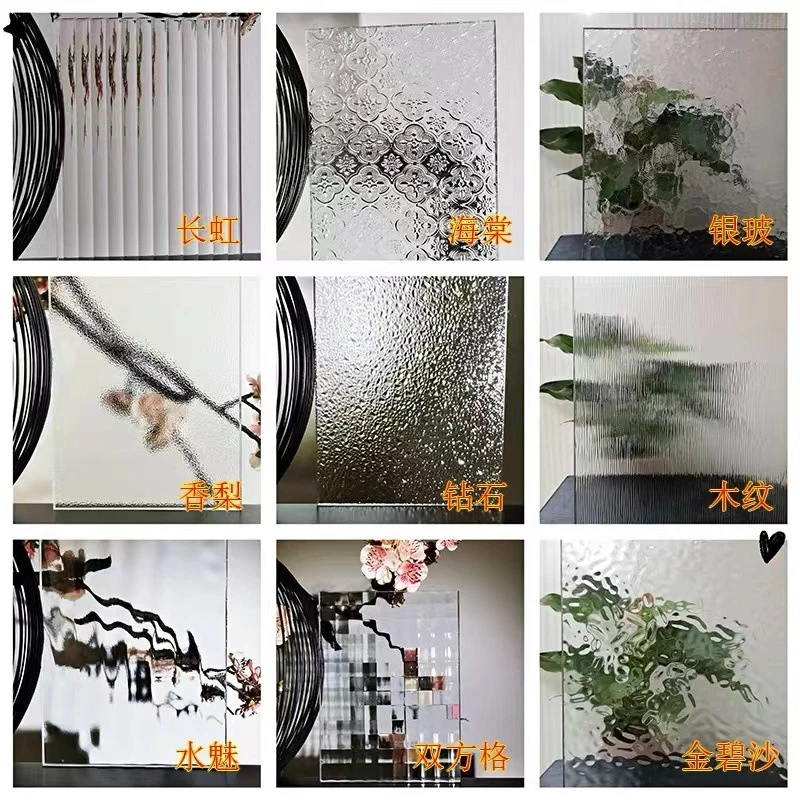Low E tempered glass is rapidly emerging as a cornerstone in modern architectural design and sustainable building practices. To understand its growing significance, one must delve into its unique characteristics and the advantages it confers both in residential and commercial settings.

Low E, or low emissivity glass, stands out due to a special microscopically thin coating applied to one of its surfaces, designed to minimize the amount of infrared and ultraviolet light that can pass through without compromising on visible light. This innovative technology allows the glass to reflect long-wave infrared energy (or heat), therefore retaining heat energy indoors during the winter and reflecting exterior heat in the summer. This ability manifests in superior thermal insulation properties, a factor that significantly reduces heating and cooling costs. With energy efficiency becoming a crucial parameter in building design, the incorporation of Low E tempered glass represents a strategic investment for those looking to enhance environmental sustainability and operational cost efficiency.
In addition to providing excellent thermal insulation,
Low E tempered glass also boasts increased durability. Tempered glass is treated with thermal or chemical processes to increase its strength compared to normal glass. This makes it an ideal choice for areas prone to high impact or pressure. In the unfortunate event of breakage, tempered glass disintegrates into small, blunt pieces, significantly reducing the risk of injury. This safety feature makes it indispensable in environments where human interaction is frequent, such as schools, offices, and homes.

A real-world example of Low E tempered glass's efficacy can be seen in the renovation of historic buildings, where maintaining an aesthetic congruence with modern energy standards is paramount. Architects and interior designers often face the challenge of marrying preservation with innovation. In such instances, Low E tempered glass offers an exceptional solution, providing the thermal benefits without altering the building's visual charm. It effectively bridges the gap between traditional architectural aesthetics and contemporary energy-efficiency requirements.
For professionals in the construction industry or homeowners considering renovations or new installations, understanding the specific types of Low E coatings is essential. Pyrolytic, or hard coat, and sputter, or soft coat Low E glasses, each have distinct properties and applications. Hard coats, with their durability, suit single-glazed applications and exterior storm windows, while soft coats, which are slightly more delicate but offer better thermal performance, are ideal for double glazing and applications requiring higher energy savings.
low e tempered glass
Choosing Low E tempered glass from a trusted manufacturer is crucial to ensure performance and longevity. Reputable brands provide product certifications and comply with international standards, guaranteeing that the glass meets specific energy efficiency and safety benchmarks. Manufacturers that invest in research and development contribute to continued advancements in glass technology, further enhancing their credibility and the value they offer to customers.
In terms of installation, certified professionals equipped with the latest knowledge of Low E glass technology are the best choice. Incorrect installation can result in decreased efficiency and shortened lifespan of the glass. A trained installer can advise on the best product type for specific climates and building orientations, ensuring optimal performance.
Lastly, supporting this choice through warranties and after-sales service from your provider will further ensure that the investment is sound. Attention to customer support not only reinforces trust but also provides peace of mind, knowing that expert assistance is readily available should any issues arise post-installation.
In conclusion, Low E tempered glass is a pivotal component in the drive towards sustainable, energy-efficient architecture. Its ability to enhance thermal insulation and safety, combined with the aesthetic flexibility it offers, makes it an invaluable asset for modern building and renovation projects. As technology continues to evolve, the role of Low E tempered glass in reducing ecological footprints and optimizing energy consumption will undoubtedly expand, affirming its place as an essential material in future construction methodologies.
 Afrikaans
Afrikaans  Albanian
Albanian  Amharic
Amharic  Arabic
Arabic  Armenian
Armenian  Azerbaijani
Azerbaijani  Basque
Basque  Belarusian
Belarusian  Bengali
Bengali  Bosnian
Bosnian  Bulgarian
Bulgarian  Catalan
Catalan  Cebuano
Cebuano  Corsican
Corsican  Croatian
Croatian  Czech
Czech  Danish
Danish  Dutch
Dutch  English
English  Esperanto
Esperanto  Estonian
Estonian  Finnish
Finnish  French
French  Frisian
Frisian  Galician
Galician  Georgian
Georgian  German
German  Greek
Greek  Gujarati
Gujarati  Haitian Creole
Haitian Creole  hausa
hausa  hawaiian
hawaiian  Hebrew
Hebrew  Hindi
Hindi  Miao
Miao  Hungarian
Hungarian  Icelandic
Icelandic  igbo
igbo  Indonesian
Indonesian  irish
irish  Italian
Italian  Japanese
Japanese  Javanese
Javanese  Kannada
Kannada  kazakh
kazakh  Khmer
Khmer  Rwandese
Rwandese  Korean
Korean  Kurdish
Kurdish  Kyrgyz
Kyrgyz  Lao
Lao  Latin
Latin  Latvian
Latvian  Lithuanian
Lithuanian  Luxembourgish
Luxembourgish  Macedonian
Macedonian  Malgashi
Malgashi  Malay
Malay  Malayalam
Malayalam  Maltese
Maltese  Maori
Maori  Marathi
Marathi  Mongolian
Mongolian  Myanmar
Myanmar  Nepali
Nepali  Norwegian
Norwegian  Norwegian
Norwegian  Occitan
Occitan  Pashto
Pashto  Persian
Persian  Polish
Polish  Portuguese
Portuguese  Punjabi
Punjabi  Romanian
Romanian  Russian
Russian  Samoan
Samoan  Scottish Gaelic
Scottish Gaelic  Serbian
Serbian  Sesotho
Sesotho  Shona
Shona  Sindhi
Sindhi  Sinhala
Sinhala  Slovak
Slovak  Slovenian
Slovenian  Somali
Somali  Spanish
Spanish  Sundanese
Sundanese  Swahili
Swahili  Swedish
Swedish  Tagalog
Tagalog  Tajik
Tajik  Tamil
Tamil  Tatar
Tatar  Telugu
Telugu  Thai
Thai  Turkish
Turkish  Turkmen
Turkmen  Ukrainian
Ukrainian  Urdu
Urdu  Uighur
Uighur  Uzbek
Uzbek  Vietnamese
Vietnamese  Welsh
Welsh  Bantu
Bantu  Yiddish
Yiddish  Yoruba
Yoruba  Zulu
Zulu 


